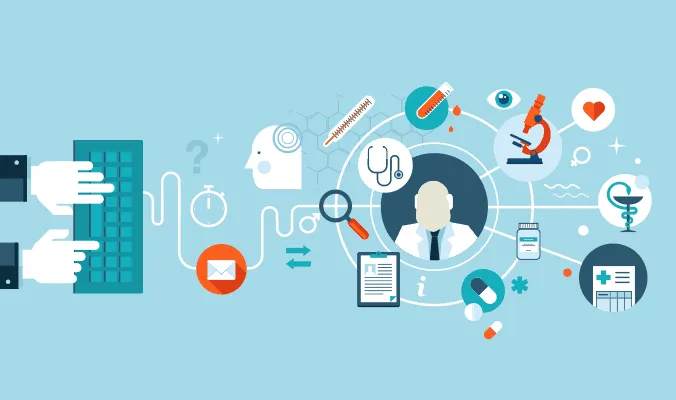Challenges of telemedicine
– Prof Rahul De’ with Sharvari Dabhade and Monalisa Mallick
Despite the challenges, there is a positive outlook for telemedicine practice, and there are a number of successful initiatives

India has achieved a significant milestone in medical access for its citizens: it has surpassed a doctor-population ratio of 1:1000, which is the World Health Organisation (WHO) recommended standard. This was achieved by counting doctors both in the modern system of medicine, who have graduated from the 500 medical colleges in India, and also those who belong to the “traditional” medical systems (Ayurveda, Yoga, Unani, Siddha, and Homeopathy). This is a remarkable achievement, as India has always lagged on this particular parameter.
However, recent events witnessed during the pandemic show that there is still a shortage of modern medical facilities, doctors, and support staff. This became obvious during the second wave of the Covid-19 pandemic, during the months of April-May in 2021. The world media was full of woeful images of patients waiting in long queues outside hospitals and nursing homes, with many suffering indefinitely, and also losing their lives. Those in rural and semi-urban areas were affected the most, as medical facilities in those regions are far less than in urban areas. This remains a persistent problem.
One answer to providing healthcare access to citizens across remote and rural regions is by using Telemedicine. This is a method by which doctors are available to patients through internet technologies such as WhatsApp video calls, Zoom sessions, and other tele-conferencing technologies. Telemedicine has grown significantly in India, with many private hospitals adopting it, and also with the government supporting it through the National Telemedicine Service. This latter service, called eSanjeevani, achieved a record 30 lakh online consultations in March 2021, and by July this service was being accessed by 75k patients per day, attended by over 30k doctors and paramedics. The reach of eSanjeevani is nationwide, wherever internet services are available.
Though the scale and reach of telemedicine services is impressive, there are some challenges that have to be overcome. We spoke to a number of doctors, in different specialities, to understand their perspective on using the system.
Doctors typically follow a four-step process in any treatment, which consists of – history-taking, clinical diagnosis, therapy consultation, and follow-up. The step of history-taking involves physicians asking individual-specific and disease-specific questions. The former are about the patient’s past illnesses, family situation, previous treatments, allergies, etc, and the disease-specific questions are about the origin, duration and progress of the disease. According to medical practice, 70% of the diagnosis is based on history-taking, making it a very important task. With telemedicine, where the patient is not physically present, history-taking becomes even more important. Our respondents said that they could not see the patients’ facial expressions clearly or gauge their anxiety levels. Sometimes connectivity issues prevented hearing patients clearly. There were additional issues with language, with patients speaking in their own dialects, and unable to communicate their ailments clearly.
The step of clinical diagnosis also faces difficulties in a telemedicine setup. Doctors cannot physically examine patients and have to basically rely on the paramedic or nursing assistants’ sometime inexpert examination and that too, if available. The third step of providing therapy involves providing a prescription for drugs, any physical therapy, and instructions on diet. This step presents challenges as patients sometimes don’t understand the prescription and are unable to grasp the nuances of the treatment
plan. Language issues also crop up here.
In the last, follow-up, step doctors guide patients on extended treatment, which could be regular or ad hoc, based on the disease. Telemedicine is most useful here, as patients don’t have to make the visit to the doctor’s office, though occasionally this is required.
These challenges are being addressed in various ways. The doctors we spoke to made several suggestions, some of which are already being implemented. Hospitals and primary health centres can set up special consultation rooms that are quiet, allow for an undisturbed conversation, and have reliable equipment and connectivity. They also suggest having sharp, close-ended questions, with yes-no answers, or limited choice answers, that patients can respond to clearly. Paramedics and trained nurses can assist with the sessions, to both speak to patients in their own vernacular and also explain the technical aspects of the questions. For this part, Asha workers could also be recruited. Also, they can help to train patients on usage of telemedicine platforms.
During clinical diagnosis, use of probes by paramedics is recommended. They also suggest asking disease-specific questions and requesting specific tests. For example, dryness or wetness of cough can be understood by asking the patient to cough during the session, and also asking for sputum colour and consistency, instead of a general auscultation test, in order to pinpoint the diagnosis.
For therapy, the suggestions are to have a standard format for a prescription, which can also be written in regional languages. Further, one could request the pharmacies to explain the dosage to the patients. The telemedicine system could also enable doctors to write prescriptions while the session is live and explain the dosage to the patients. Follow-up consultations are certainly easier with telemedicine, but at times physical examination of patients would be necessary to review diagnosis and treatment.
Despite the challenges, there is a positive outlook for telemedicine practice, and we have seen a number of successful private and government initiatives. Start-ups like Practo, Lybrate, 1mg, and DocsApp are making this a possibility in India. Larger healthcare groups and the government are also pitching in. Some estimates peg this as a multi-billion dollar market in India. We hope this is realized and also hope that
telemedicine facilities reach the most remote and under-served places in India.
The article has been written by Rahul De’ is a Professor of Information Systems; Sharvari Dabhade and Monalisa Mallick are MBA students; all at IIM Bangalore.
Source: DataQuest


